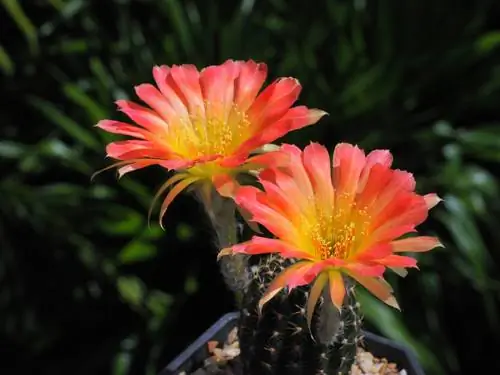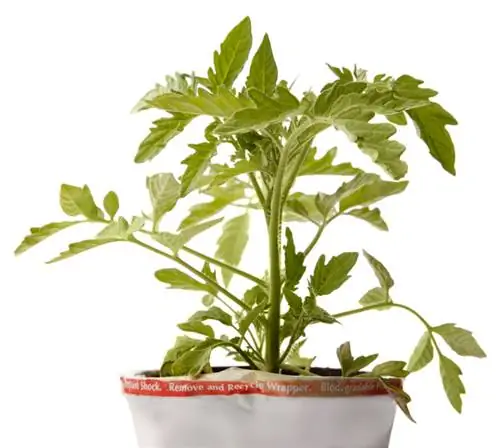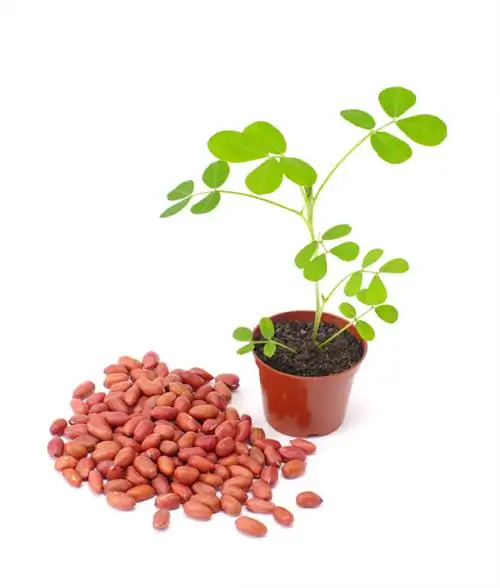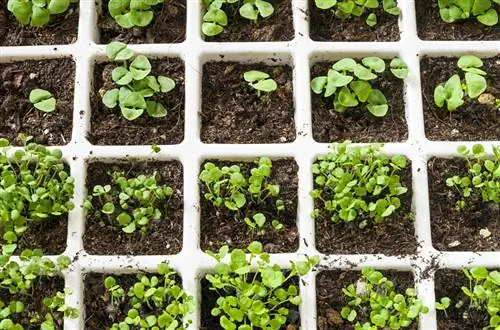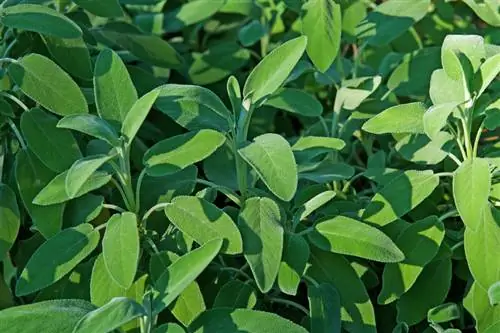- Author admin [email protected].
- Public 2023-12-16 16:46.
- Last modified 2025-06-01 06:02.
Echinopsis are the glamor stars among the cacti with furious, palm-sized flowers. The prickly flower beauties demonstrate modesty only when it comes to planting and care. Start your new hobby gardening career as a cactus collector today with a farmer's cactus. A look at the profile with explanations and care instructions explains why you can easily get started with Echinopsis. Here's how to plant and care for gorgeous Echinopsis cacti with minimal effort.
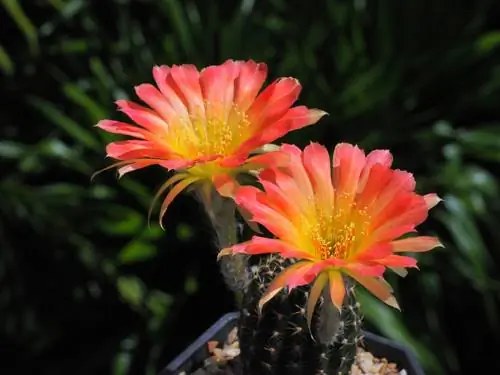
How to properly care for Echinopsis cacti?
Echinopsis cacti are a popular genus from South America with colorful, large flowers. To care for them, they should be planted in well-drained cactus soil in a warm, sunny location. Water sparingly, fertilize from March to August and ensure a frost-free winter.
Profile
- Family: Cactaceae
- Genus: Echinopsis
- Species: 135 to 180 species
- Origin: South America
- Synonyms: farmer's cactus, hedgehog cactus
- Growth habit: spherical to columnar
- Growth height: 5 cm to 6 m
- Flower shape: cup-shaped to funnel-shaped
- Winter hardiness: not hardy
Origin
The original distribution area of Echinopsis extends across Argentina. The type species of the genus Echinopsis eyriesii comes from near Buenos Aires. In the mid-1980s, the Echinopsis genus grew significantly. Among other things, independent cactus genera were previously assigned to it, such as Lobivia, Pseudolobivia or Trichocereus. As a result, the area of origin expanded to include Bolivia, Chile, Paraguay, Uruguay and central and southern Brazil.
Winter hardiness
The South American origin leaves no doubt. Echinopsis cacti are not hardy. A few species from the high altitudes of the Andes can tolerate short-term temperatures around freezing. As a rule, echinopses have to overwinter behind glass when the mercury outside falls below 10 degrees.
Bloom
Echinopsis flowers are unsurpassed among the cactus plants when it comes to their splendor. With a length of up to 27 centimeters and a diameter of 15 centimeters, the beautiful calyxes rise above the lush green to gray-green plant body. The variety of flower colors leaves nothing to be desired. With the exception of blue, green and black hues, farm cactus and its counterparts bloom in every conceivable nuance and shade. The following video gives an impression:
Video: Admire fairytale Echinopsis flowers in time lapse
Species
The Echinopsis genus brings together more than 130 magnificent species under its umbrella with different growth forms, sizes and thorn lengths. The following table presents popular and well-known species in more detail:
| Echinopsis species | Echinopsis eyriesii | Echinopsis chamaecereus | Echinopsis oxygona | Echinopsis pachanoi | Echinopsis subdenudata | Echinopsis tubiflora |
|---|---|---|---|---|---|---|
| Growth | sprouting, cylindrical | lying down | spherical, forming groups | branched columnarly | spherical | tubular |
| Size/Length | 15 to 30 cm high | 5 cm high, 20 cm long | 5 cm high, 5-25 cm Ø | 3 to 6 m high | 5 to 7 cm high | 50 to 75 cm high |
| Thorns | 7mm | 1, 5mm | 25 to 30 mm | 20mm | 1, 5 to 2 mm | 25 to 35 mm |
| Flowering time | April to September | May to July | April to September | Summer, blooming several times | Spring to Summer | April to August |
| flower size | 20-25 cm long, 10 cm Ø | 7 cm long, 4 cm Ø | 20-25 cm long, 12 cm Ø | 19-24 cm long, 20 cm Ø | 20 cm long, 7 cm Ø | 24 cm long, 10 cm Ø |
| flower colors | white, delicate pink | vermilion | light pink | white | white | white |
| Synonym | Farmer Cactus | Peanut Cactus | none | San Pedro Cactus | none | ball cactus |
Echinopsis pachanoi is not the only giant the genus has to offer. Echinopsis Lageniformis boasts a height of up to 5 meters, closely followed by Echinopsis candicans and Echinopsis peruviana with an impressive 3 meters height.
Planting Echinopsis
Plant Echinopsis in permeable soil that provides the roots with appropriate storage capacity for nutrients and water. The correct planting technique is primarily aimed at preventing waterlogging. An acclimatization phase prepares your farmer's cactus perfectly for the summer location. How to plant Echinopsis correctly:
Substrate
Echinopses love to extend their fine roots into a substrate with humus and mineral components. Over time you will develop your individual recipe. To get started with your cactus collection, we recommend a tried-and-tested mixture:
- Cactus soil: 40 to 60 percent proportion
- Mineral aggregates: lava granules, expanded clay, akadama, perlite, quartz sand, bentonite
The result of this mixture is a structurally stable clay-humus complex for a well-balanced water and nutrient balance.
Planting technology
Plant a farmer's cactus in a pot with a hole in the bottom for drainage. The diameter of the planter should be two to three centimeters larger than the root ball. Follow these steps professionally:
- Cover the floor opening with a curved potsherd as drainage
- Pour cactus soil mix up to half the height of the pot
- Form a depression in the substrate with a spoon or stick
- Unpotting and planting the farmer's cactus
- Push the substrate with the handle of a spoon or stick over the roots until just below the plant body
- Press the soil and water with a fine spray
Echinopsis cacti are preferably watered with soft, room temperature water. Ideally, use a ball sprayer so that splashing water does not expose the root ball. Pour thoroughly until the saucer fills up. To prevent waterlogging, remove the accumulated water after 10 minutes.
Location
After planting, your hedgehog cactus completes a phase of regeneration. The green plant body has to get used to direct sunlight. To protect against sunburn, place Echinopsis in a pot in a partially shaded place for two weeks. Your farmer's cactus is then prepared for a full sun and warm location on the south-facing windowsill. From May to September, the cactus plants enjoy fresh air and the warmth of the sun on the balcony.
Excursus
Floral splendor not just for night owls
Classic echinopsis stage the spectacular flower show from late afternoon to early morning. The majestic calyxes unfold under the cover of darkness. Recently, the splendor of flowers is not reserved for night owls among hobby gardeners. Since the genus reform, day-flowering plants such as Lobivia and Pseudolobivia have also been included in the Echinopsis genus.
Caring for Echinopsis - Tips
One of the mainstays of Echinopsis care is a frost-free, cool-tempered winter rest. Year-round cultivation at room temperature is possible, but it prevents the cacti from blooming again the next year. Soft watering water, a well-measured dose of nutrients and repotting at the right time also contribute to the summer blooms. The best care tips in a nutshell:
- Watering: alternate watering (dipping) with rainwater and allow to dry thoroughly
- Fertilizing: from March to August add liquid cactus fertilizer to the irrigation water every 2 weeks
- Overwintering: bright and cool at 8° to 10° Celsius, water rarely, do not administer nutrients
- Repotting: at the end of winter dormancy, when the roots fill the pot or grow out of the opening in the ground
The side sprouts are suitable for propagation as cuttings. In early spring, cut off one or more side shoots with a sharp, disinfected knife. Dust the cut with activated charcoal powder and allow each cutting to dry for a few hours. Planted in a mix of cactus soil and coconut soil, Echinopsis sprouts root happily in the bright, warm window seat. Sowing seeds is also an option.
Popular varieties
The species in the table above and numerous of their conspecifics were the inspiration for the breeding of representative Echinopsis hybrids, such as the legendary Rheingold hybrids, noble Schick hybrids, distinctive Lobivia hybrids and exquisite Trichocereus hybrids with these breathtaking varieties:
- Kriemhild Rheingold257: reddish-purple flowers, light red central stripe, 10 cm Ø, columnar-olive-green plant body
- Canary Wes323: bright yellow flowers, 10 cm long, 8 cm Ø, short-thorned, green-olive, columnar in growth
- Crepe Crusader Schick807-2: Magenta-red, cream-white striped flowers, 12 cm Ø, spherical plant body
- Fluffy Ruffles: peach-pink flowers, light yellow central stripe, 16 cm long, 10 cm Ø, dark green, cylindrical growth
- Greetings from Altenbergen: pink-light purple flowers with greenish-yellow throat, 15 cm Ø, lawn-green, spherical growth
- Love Story Rheingold230: salmon-red, pink-edged flowers, white-pink throat, 9 cm Ø, columnar with extra long thorns
FAQ
What does the botanical name for Echinopsis mean?
The botanists demonstrated verbal accuracy when choosing the scientific name. Echinopsis is made up of the two Greek words echinos for hedgehog and opsis for appearance. The spherical, thorny silhouettes of the cactus plants could hardly be described more meaningfully.
How often do you water Echinopsis cacti?
How often you water Echinopsis cacti depends on the location, season, size and flowering time. Water small varieties in a sunny location on average every 7 days. Echinopsis hybrids with a plant body of 20 centimeters or more in height or diameter should be watered every two to three weeks. When farm cacti bloom, the need for watering increases. During this phase, please check every two to three days using a finger test to see whether the cactus soil has dried out. During winter rest, water echinopses sip by sip according to the rule of thumb: the larger, the rarer.
Can you cut off the roots of Echinopsis?
Echinopsis form a root system of deep and shallow main roots with a dense structure of hairy and fine roots. You should only intervene in this complex structure with scissors in an emergency. If you notice dead, stunted roots when repotting, cut off the strands with sharp, disinfected scissors.
Can you root Echinopsis sprouts in sand?
It is an insider tip among cactus lovers. In fact, Echinopsis and other cactus plants root excellently in sand, especially bird sand. Immediately after cutting, plant each cutting with a moist cut in sand to a third of its height. For the first week, leave the sprouts alone. From the second week onwards, spray cuttings and sand with soft water every two to three days. From the beginning of the third week, water regularly. The cuttings root within five weeks and can be repotted in cactus soil.

